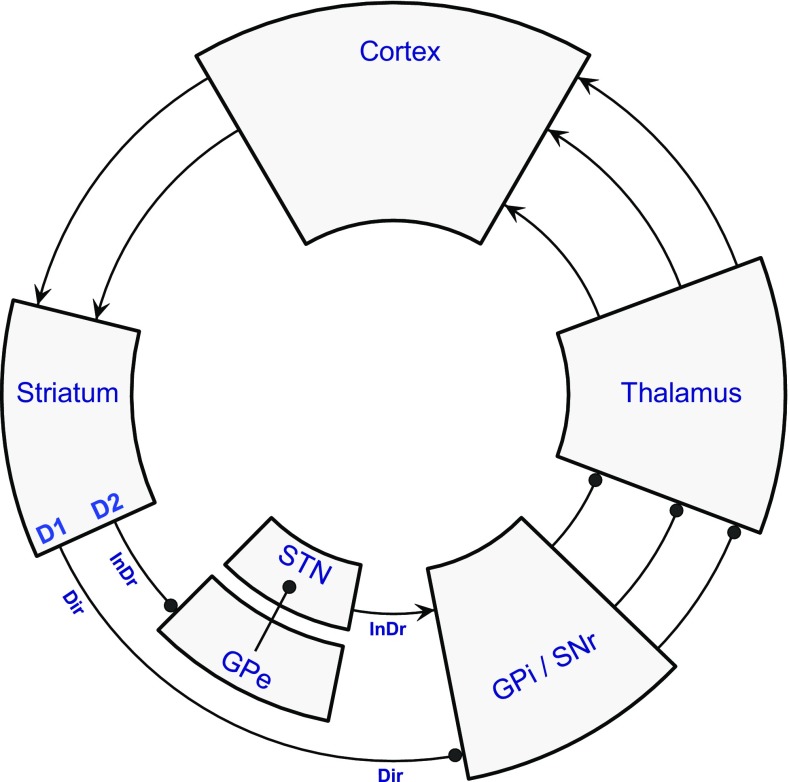Fig. 2.
The classic direct/indirect pathway model of BG circuits. This diagram is adapted from the circuit diagrams originally presented by Albin et al. (1989) and DeLong (1990) showing circuit elements common to both that form the essential components of the direct and indirect BG loops with cortex. Operationally, these two loops may be said to traverse the whole circuit, but they are only anatomically distinct in the sector of the loop between the striatum and the GPi/SNr. The direct pathway originates from GABAergic striatal spiny projection neurons (dSPNs) that express D1 dopamine receptors, and project directly to either component of the GABAergic BG output module, GPi/SNr. These two successive inhibitory relays (striatum and GPi/SNr) can achieve positive feedback to the cortex through disinhibition of the thalamus. The classic indirect pathway originates from iSPNs that express D2 dopamine receptors, and project to the BG intrinsic nucleus, GPe; it then passes to the GPi/SNr via the glutamatergic intrinsic nucleus, the STN. Hence, the indirect pathway is pictured to disinhibit the STN, excite the GPi/SNr and achieve negative feedback to the cortex through suppression of the thalamus. Note that a subsequently discovered projection from GPe to GPi/SNr (see Fig. 3) provided a shorter, but logically equivalent route for the indirect pathway, prompting more sophisticated functional models. Arrowhead ending excitatory connection, ball ending inhibitory connection, Dir direct pathway, InDr indirect pathway. See Fig. 1 for BG nuclei abbreviations

